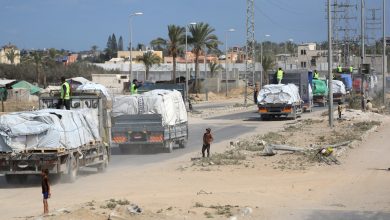Israeli warplanes conducted a series of airstrikes on Sunday morning targeting areas within the ‘Yellow Line’ in Khan Younis and Rafah, southern Gaza Strip. The strikes occurred against a backdrop of a worsening humanitarian crisis, exacerbated by torrential rains that have flooded thousands of displacement tents.
Reports indicate that the bombardment focused on areas southeast of Khan Younis and northeast of Rafah. Simultaneously, the Israeli military reportedly carried out demolition operations west and north of Rafah. Witnesses reported Israeli helicopters striking northern areas of Rafah, also behind the ‘Yellow Line’, coupled with ground-based demolition activities. An airstrike was also reported southeast of Khan Younis, inside the ‘Yellow Line’.
Further north, Israeli warplanes launched at least one airstrike east of Gaza City, again within the ‘Yellow Line’. Israeli tanks reportedly fired upon various areas east and north of the city. Initial reports suggest no casualties have been reported at this time.
The recent weather system has triggered a humanitarian catastrophe across the Gaza Strip. Heavy rainfall has inundated thousands of tents in displacement camps, destroying what little belongings displaced families had left.
The United Nations has stated that over 13,000 families have been affected by the severe weather, with thousands losing essential supplies. Palestinian civil defense authorities in Gaza have warned of the disastrous consequences of the rainfall on displaced persons. An estimated 500,000 displaced families reside in camps and shelters due to the ongoing conflict.
A spokesperson for the civil defense emphasized that the necessary number of tents have not been allowed into Gaza, alleging non-compliance by Israeli authorities. They stated that only approximately 15% of the required aid has been delivered, further stating that they are unable to respond to many calls for help due to lack of resources, as Gaza faces weather conditions that the current shelters cannot withstand.
The Gaza Strip urgently requires an estimated 250,000 tents and 100,000 mobile homes to provide adequate shelter for those displaced. The situation remains critical as aid organizations struggle to meet the overwhelming needs of the population.




